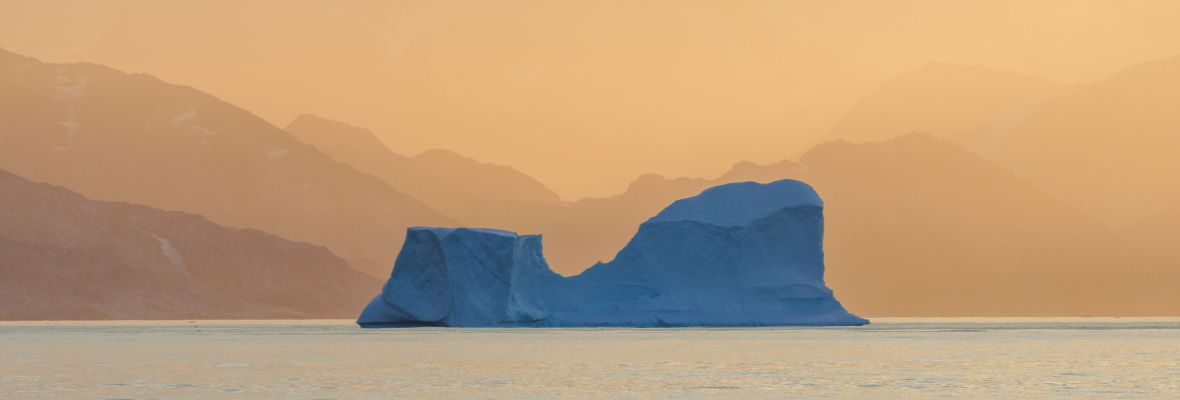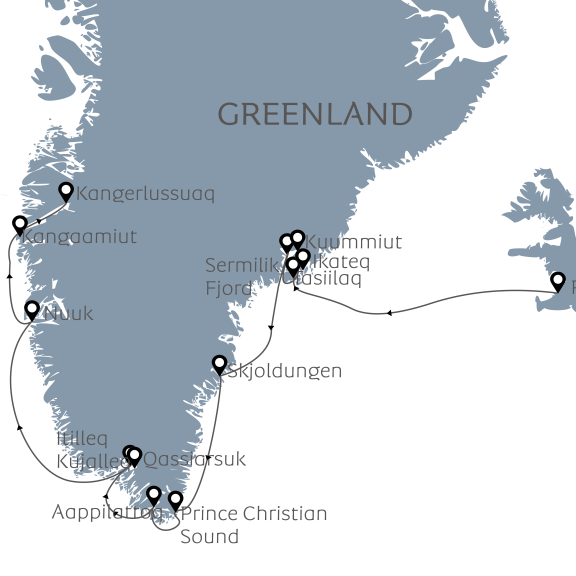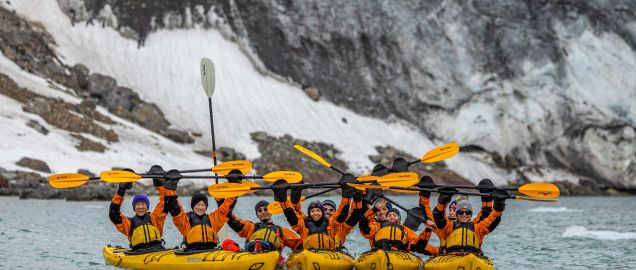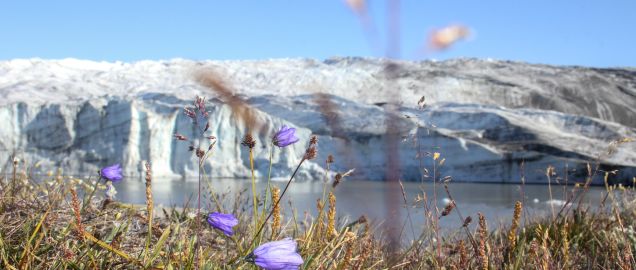Greenland Explorer - From Iceland to Greenland - 2025
Next DepartureJul. 29, 2025See all departures |
Duration12 daysSee the itinerary |
Activities
, Kayaking, Lectures, Wildlife observations, Zodiac |
New and updated route for 2025! Join us on an expedition cruise from Reykjavík to Kangerlussuaq, following the same maritime course set by Norse settlers over a thousand years ago. Experience the diversity of East, South and West Greenland, from the bustling mini-metropolis of Nuuk to the spectacular icebergs of Sermilik all in one unique voyage!
Join us on a thrilling expedition cruise from Reykjavík, following the same maritime course set by Norse settlers over a thousand years ago. While the spectacular scenery of this region remains untouched, thankfully our purpose-built expedition ship offers significantly more comfort and style than a Viking longship! Our first destination is the rugged shores of East Greenland, an ancient land steeped in mythology and ancient Inuit tradition. Here we will experience Tunumiit culture in the bustling towns of Tasiilaq and Kuummiut, learn about Greenland's fascinating modern history at Ikateq, and witness the icy majesty of Sermilikfjord, one of Greenland's most spectacular sights. From here, we will chart a course for the glassy waters and perfect silence of Skjoldungen Fjord on Greenland's southeast coast, after which we will sail through the magnificent strait of Prins Kristiansund, the glacier-lined channel separating Kap Farvel (Greenland's southernmost point) from the mainland, before venturing deep into the fjords of South Greenland.
The lush green fields and rolling hills of South Greenland make it easy to see why the Norse gave the island the name it bears to this day - and why the Norse chose to settle in this green paradise. Here we will to visit the ancient remains of Brattahlíð, Erik the Red's former farmstead in the small farming village of Qassiarsuk, and trek across to Igaliku, once the seat of the Norse Bishops of Greenland.
Following the magnificent coastline of Earth's largest island, we will visit Nuuk, one of the smallest (but no less perfect) world capitals. With everything you would expect from a capital city, including skyscrapers, exceptional museums and boutique shopping, Nuuk still has a strong Greenlandic vibe; tiny traditional wooden houses sit in the shadow of glassy towers, and locals buy seal and whale meat at the city market. The city also has a few charming oddities- including the only traffic lights in Greenland!
From Nuuk, we will pass by the village of Kangaamiut, a town steeped in Greenlandic culture and tradition which sits on the edge of the a maze of fjords, islands, mountains and glaciers. In the afternoon, we will venture into the nearby Eternity Fjord to experience this astounding natural beauty.
Join us onboard Ocean Albatros for an enriching experience combining Nordic and Inuit culture and the natural wonders of the Arctic!
Facts about Greenland Explorer - From Iceland to Greenland - 2025
- Arctic
- Greenland


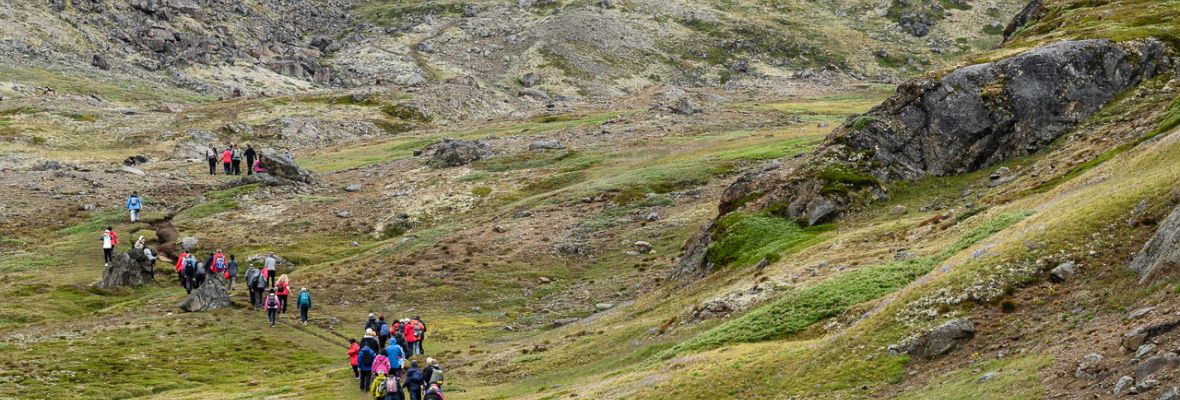

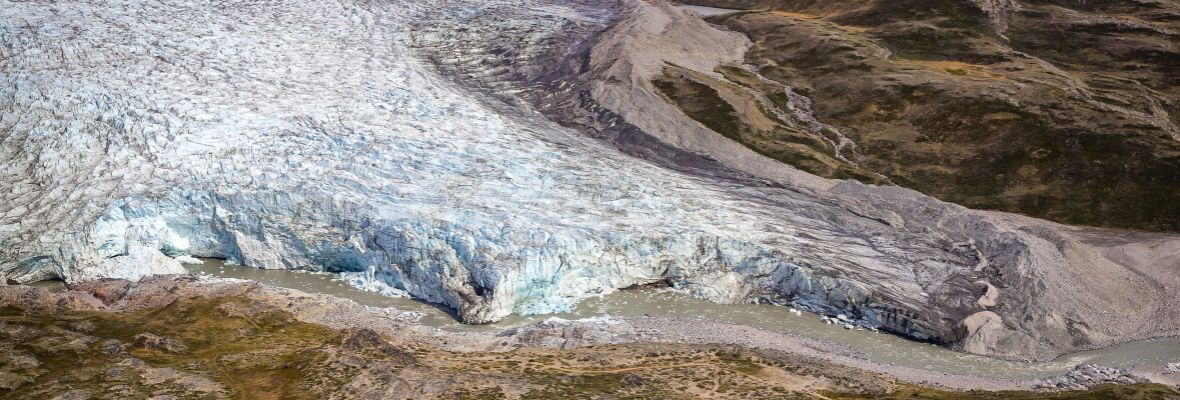
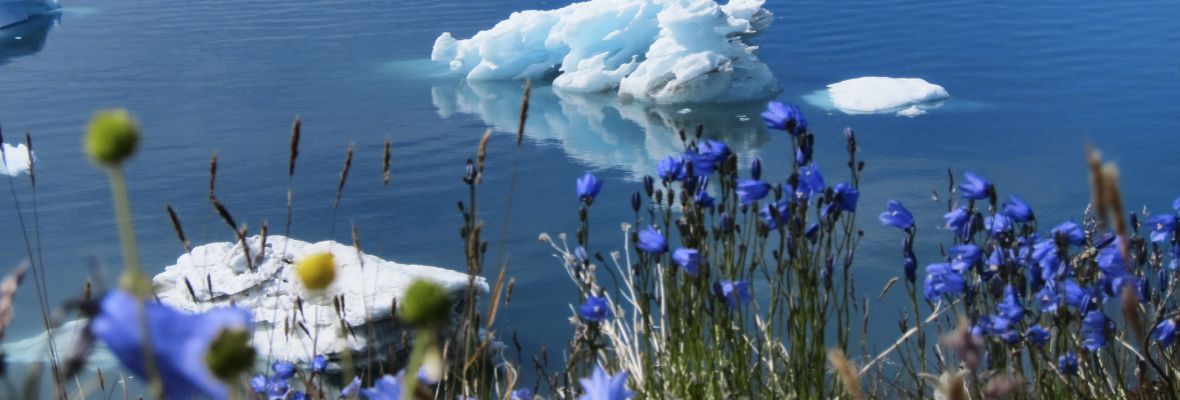
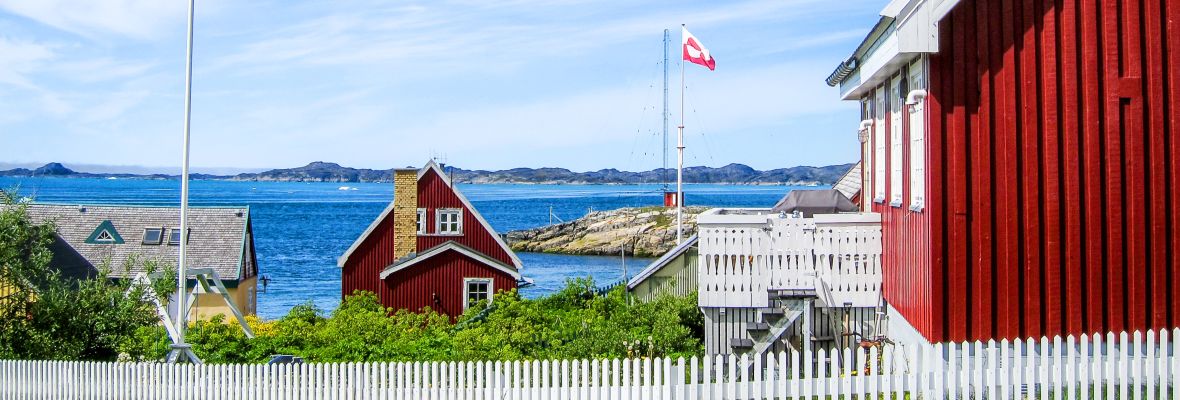

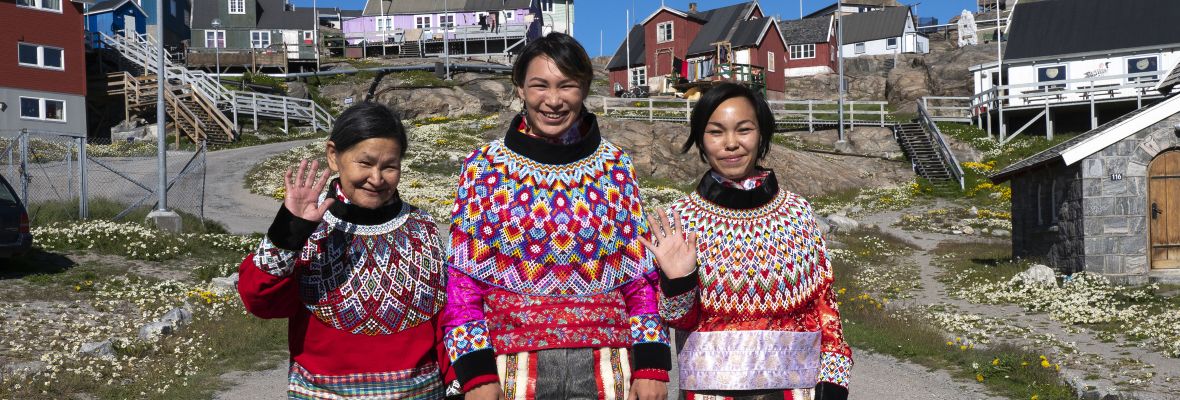
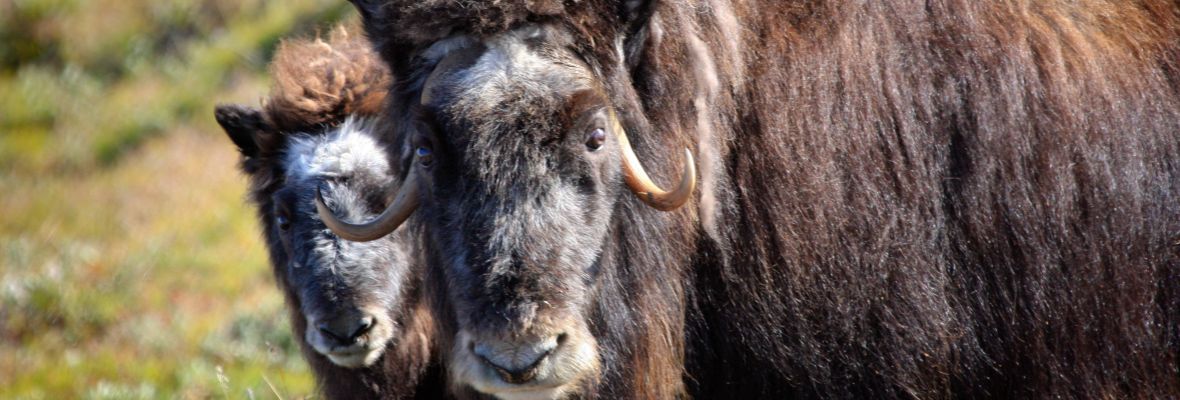

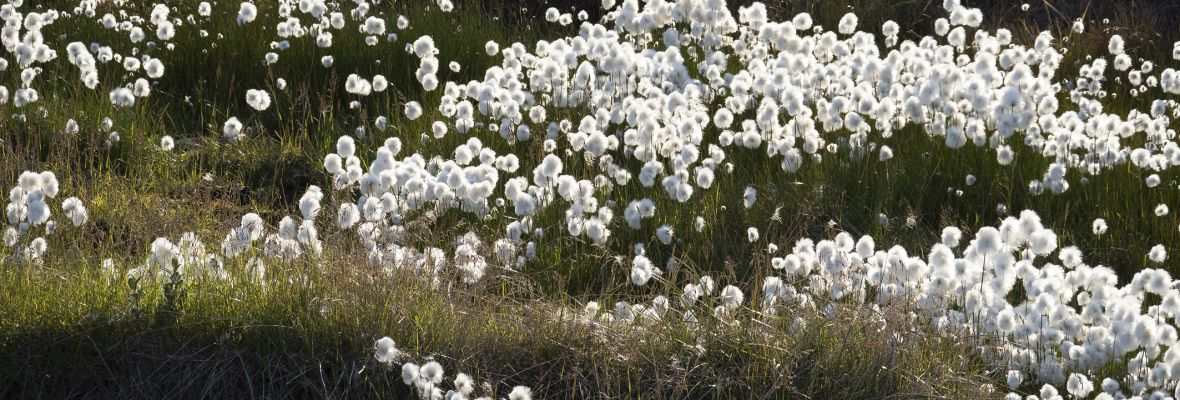
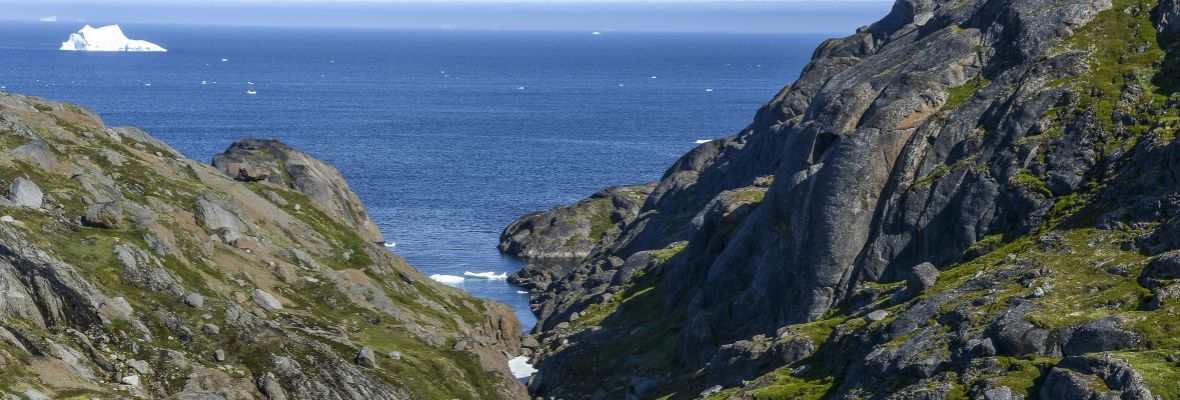
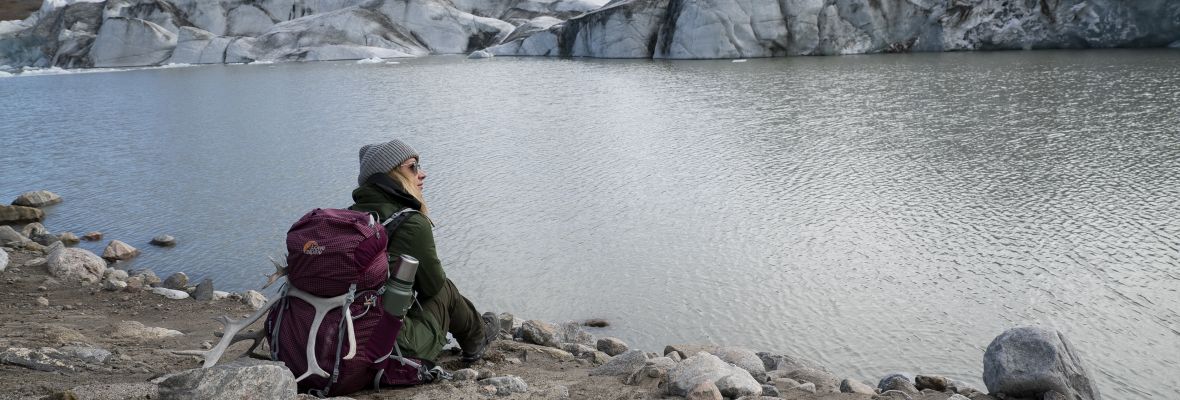



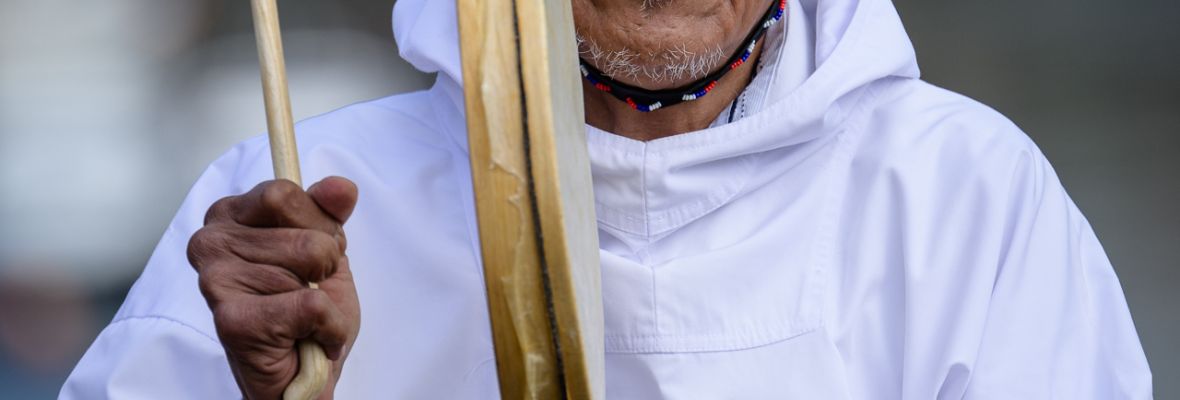
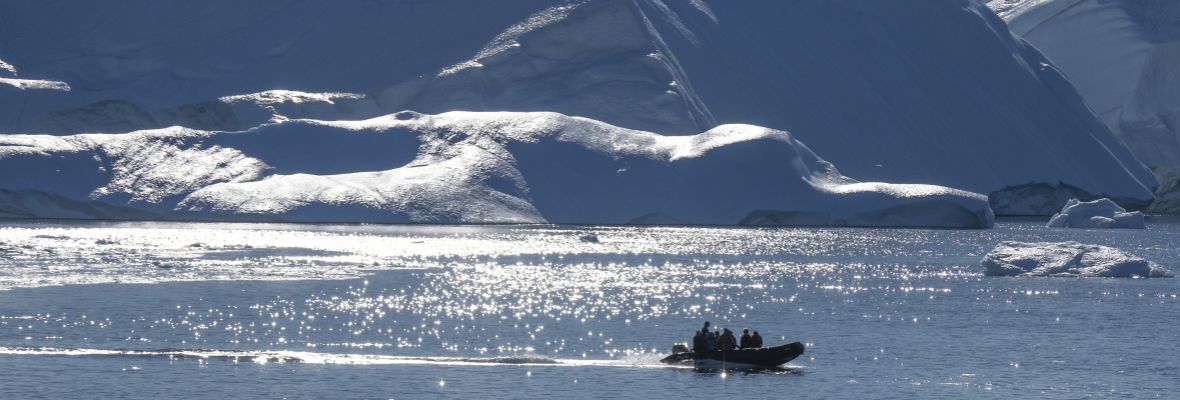
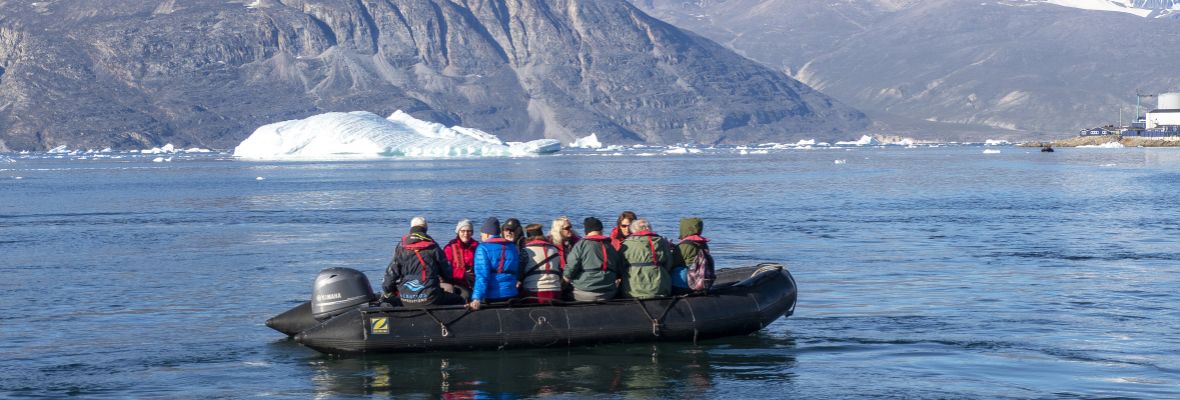
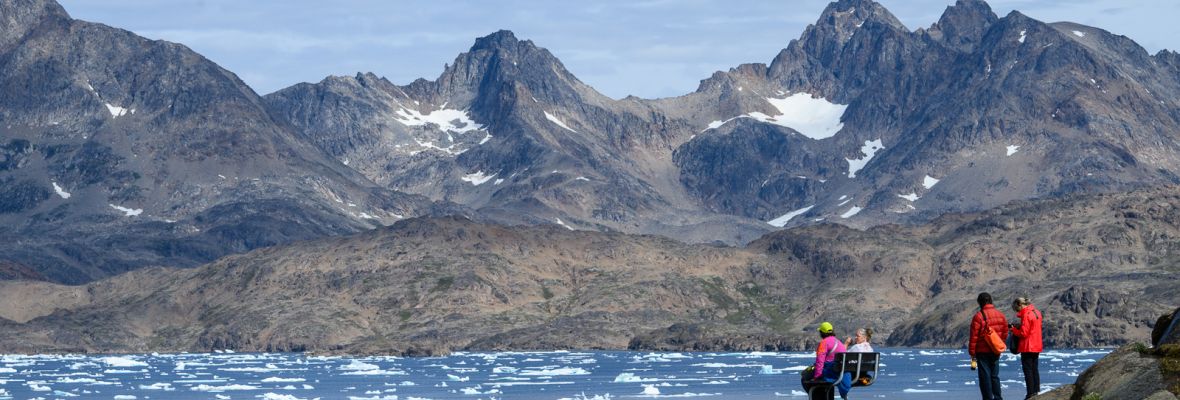
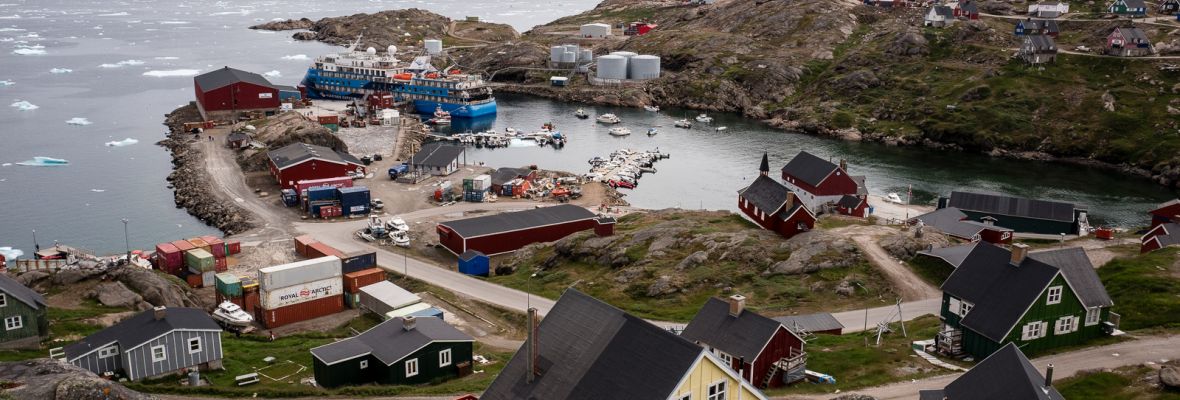
Day 1
Reykjavík, Iceland
The rock-like columns of Hallgrímskirkja Church loom over the city of Reykjavík, a hip Scandinavian capital which needs little introduction. With new Nordic cuisine, excellent shopping, fantastic excursions and an easy relaxed vibe, Reykjavik is one of Scandinavia's most welcoming and exciting cities. Situated in the centre of the North Atlantic, Reykjavík is the perfect place to start Arctic adventures!
Our purpose-built expedition vessel awaits in the city's bustling harbour, awaiting to welcome our guests. After the madatory safety drill, enjoy dinner and a glass of champagne as we follow the thousand-year-old Norse sea route towards Greenland.
Day 2
Crossing the Denmark Strait
As Norse explorers once did, we will cross the Denmark Strait from Iceland to Greenland. Days at sea are never dull. We will arrange a variety of activities onboard for our guests to enjoy to engage the mind, body and soul. Join your knowledgeable Expedition Team lecturers in the Theatre to hear specially-crafted lectures on local history, wildlife, geology, culture and more, unwind with a massage in the Albatros Polar Spa, or simply watch the seabirds gliding along with the ship from our hot tubs, as your expedition vessel flies across the Denmark Strait.
Day 3
Tasiilaq, East Greenland
Our first port of call in Greenland is Tasiilaq, the largest settlement in East Greenland. Unlike the west coast, which has had uninterrupted contact with Europe since the 1700s, the coast of East Greenland remained more or less uncontacted until around 1894, when a Danish trading post was established at Tasiilaq. The vast distances involved in Arctic travel meant that the people of East Greenland (Tunumiit) were isolated from their cousins to the west, and the language, traditions and culture of East Greenland therefore differ significantly to those in other parts of the country.
Ancient traditions are strong here. This region of Greenland was the home of the last Angakkuit (Shamans) of Greenland, and is the home of the tupilak - a monster fashioned from animal (and sometimes human) body parts and animated by the power of an Angakkuq to wreak havoc on enemies. Creating such a monster was dangerous, as it could be turned back by a more powerful magic user to attack its creator. The first Europeans were curious as to what these dark beasts looked like, and locals carved facsimiles in bone or horn, beginning one of Greenland's finest artistic traditions. The tupilaat made by artisans in Tasiilaq are considered among the best in the country.
Tasiilaq sits in a perfect natural harbour on Ammassalik Island (meaning 'the Place of Many Capelin'). While superficially similar to towns on the West Coast, the landscape here is much more rugged, the people fewer, and the sled dogs much more numerous. Tasiilaq offers excellent opportunities to explore, with excellent hiking routes such as the Flower Valley easily accessible from town. For those wishing to delve into Tunumiit culture, visit the museum, located in the city's old church, hear the city's exquisite choir perform in the modern church, or watch a drum dancer in traditional East Greenlandic costume perform a millennia-old spiritual tradition. For those wishing to indulge in some retail therapy, visit the Stunk Artist's Workshop, where skilled craftsmen create beautiful pieces from natural local materials. Otherwise, hike up the hill towards the hotel to enjoy some of the best views anywhere in the country.
Day 4
Ikateq and Kuummiut, East Greenland
In the morning, we will sail slightly eastwards towards Ikateq, a spectacular fjord with a fascinating history. During the darkest days of the Second World War, American forces established an airbase here (one of the network of air bases which includes Kangerlussuaq on the west coast) to serve as a stepping stone for aircraft transiting between Europe and North America. The rugged landscape of East Greenland meant the approach into the airport was hazardous, with frequent fog masking the treacherous mountains. Huge recources were invested into Ikateq Airbase (also known as Bluie 2 East), with a 5,000ft runway, hangar, barracks and port constructed. A fleet of military vehicles and thousands of barrels of fuel were also brought to this remote region. With Germany defeated, improvements to intercontinental aircraft, and increasing tensions with the Soviet Union, the United States Military abandoned the base in 1947, leaving almost everything behind.
The air base has been a bone of contention between Nuuk, Copenhagen and Washington for many years. Many in the Greenlandic government wanted the site cleaned up and the ruins removed; an expensive and logistically challenging task. Eventually, the Danish Government agreed to remove hazardous waste from the site (mainly decaying fuel drums), but leaving the rest of the equipment in place as an important part of regional history. Over 75 years later however, almost everything remains as it was on the day the Americans left. Ikateq is a truly unique place, a time warp to the Second World War: eerie, fascinating and surrounded by staggering natural beauty.
We will spend the afternoon in the small village of Kuummiut, which sits in breathtaking surroundings in the calm reaches of Ammassalik Fjord. Kuummiut - meaning 'People who Live by the River' - is one of the larger villages in the area, and one of the most prosperous. Sitting upon some of East Greenland's richest fishing grounds, Kuummiut holds the only fish factory in the region, and fishermen from miles around come through Ammassalik Fjord (which is wide enough to stay mostly ice-free year-round) to sell their catch here.
Kuummiut is an ideal place to experience life in an East Greenlandic settlement. Where other towns have traffic, Kuummiut has the yowling of sled dogs and the sigh of the wind through the grass. No roads lead in or out of this isolated village, and the sea is the highway for local transport - although motorboats have replaced the skin boats which brought people to these shores long ago. It is a perfect place to simply sit, watch the icebergs pass, and perhaps see the whales which often frolic in the calm waters offshore.
From Kuummiut, we will continue to navigate through the labyrinth of fjords, heading towards Sermilik.
Day 5
Sermilik, East Greenland
Separating Ammassalik Island from the Greenlandic mainland lies the vast Sermilik Fjord. Sermilik is a typically descriptive Greenlandic placename, roughly meaning 'the Glacial Fjord' and it is no mystery why: this waterway is choked with vast icebergs, and surely ranks among the most spectacular natural wonders of the region. The icebergs here mostly originate at the vast Helheim Glacier, one of the largest glaciers in this icy country. The Helheim and other glaciers which empty into the fjord pour directly off the Greenland Ice Sheet, the edges of which can be seen to the east, rising thousands of metres towards the frozen core of this vast island.
The volume of ice will dictate our precise activities in Sermilikfjord, although options include coming ashore to marvel at the spectacular scenery and untouched nature of the area, or exploring on the water and marvelling at the natural ice sculptures of the area on a Zodiac cruise through the icebergs. Whatever we do, prepare to be amazed by the jaw-dropping beauty of this otherwordly place.
Day 6
Skjoldungen, Southeast Greenland
Today's adventure begins as we sail into magnificent Skjoldungen, a staggeringly beautiful fjord on the southeastern coast of Greenland. The fjord is named for Skjold, an ancient Danish King of legend, while the Greenlandic name, Saqqisikuik, references the sunny climate of the area. Various archaeological finds on the island which sits in the middle of the fjord suggests nomadic Inuit groups visited and stayed in the area in years gone by; more recently, settlers were brought from Tasiilaq to settle the island in the 1930s, but returned there thirty years later;some houses can still be seen on the southern side of the fjord. A small weather station was also operated on the island by the Allies during WWII.
Today uninhabited, Skjoldungen sits almost 300km from the nearest village, with Mother Nature its only ruler. Vast saw-toothed mountains lined with opalescent glaciers line the deep chilly waters of the fjord, which can freeze even in summer. At the head of the fjord lies the magnificent Thryms Glacier, a magnificent river of ice flowing down from the ice sheet. On the southern side of Thryms Glacier lies the sweeping U-shaped glacial valley of Dronning Maries Dal - a textbook example of a glacially-produced landscape. Join your expedition team for a walk on the flower-lined floor of this valley, and marvel at the stunning scenery. Ensure you are on the outer decks on our approach and departure from this magnificent fjord too: you will not be disappointed!
Day 7
Prins Christian Sund and Aappilattoq
South of Skjoldungen lies Kap Farvel, or Cape Farewell, which is renowned not only as Greenland's southernmost point, but also for its infamously challenging weather, which commonly features large swells and gale-force winds.
With this in mind, we deliberately opt for a far more comfortable but also more spectacular route, cruising via the inside passage of Prins Christian Sund. Known in Greenlandic by it's typically descriptive name of Ikerasassuaq ('the Big Strait'), this 60 km long waterway reaches from the entrance on the southeastern coast of Greenland to the small village of Aappilattoq, connecting the Labrador and Irminger Seas.
Prins Christian Sund is one of the most spectacular waterways anywhere on Earth. Kept free of ice year round by strong tidal currents, the strait is hemmed in on either side by mountains which rise straight out of the water some reaching over 2,000m in height. Large glaciers flow from the ice sheet into the sea on the northern side of the strait, while sapphire blue mountain glaciers loom over the water from the southern side, and vast icebergs stud the glassy waters.
In the afternoon, we will approach the small village of Aappilattoq, which sits hunkered beneath the towering mountains at the end of Prins Christians Sund. The village is a world away from busy Tasiilaq or even Kuummiut; life here moves at a slower pace, following the rhythms of the wind, waves and tides. Aappilattoq (meaning 'Red' in Greenlandic, referring to the stark granite bluffs above) offers excellent hiking opportunities, and the local choir is renowned throughout Greenland.
DAY 8
Qassiarsuk and Itilleq Kujalleq
During the early morning, Ocean Albatros will sail through the majestic mountains of Tunulliarfik Fjord towards the small beach of Itilleq. The southern fjords of Greenland offer a very different environment to the chilly north and east of the country. Situated at roughly 60°N, this region is level with northern Scotland or southern Scandinavia, with a climate to match. Here, the weather is calm, stable and humid, with much warmer summers and milder winters than the rest of the country. In place of rocky hillsides, the fjords here are lined with lush green meadows and dotted with small sheep-farming settlements, of which Qassiarsuk and Igaliku are perhaps the best known.
Coming ashore in the morning at the sheltered bay of Itilleq, a farm trail beckons us to the village of Igaliku. During the morning, we will trek through the lush green hills to see the remains of the Norse Bishop's palace at Garðar - once a place of great power and influence in this remote corner of the Norse world.
During the afternoon, we will reposition to the other side of the fjord to the sheep-farming village of Qassiarsuk. While the modern village was founded in 1924, the location has a fascinating and much longer history; it was here that legendary Norse explorer Eric the Red settled after being banished from Iceland. He named the land he discovered 'Greenland' to encourage other settlers to follow him - a marketing ploy that has stood for over a thousand years!
Erik the Red settled in this green landscape and set up a small farmstead in typical Norse style, naming his new home 'Brattahlíð'. Erik himself kept fiercely to the Norse gods, but his wife Thjodhild was a Christian. Legend has it, she refused to join his bed until he built her a church, which he eventually did, constructing a tiny hut (Þjóðhildarkirkja) which was nevertheless the first church in the Americas (although he refused to have it within view of his house).
The Norse settlers in Greenland stayed for almost 500 years, but disappeared from all historical records in the early 1400s. Whether some plague or famine struck them, or whether deteriorating climate simply forced them to return to Scandinavia remains a topic of lively debate. Today the outlines of buildings (including Erik's house, Thjodhild's church and the Bishop's palace) can be seen, along with stunningly accurate reconstructions of Eric's farm, where modern Inuit farmers continue to raise sheep to this day. A statue of Erik now overlooks the area, commemorating the first European to reach the Americas, and whose son Leif would be the first European to reach Baffin Island and Newfoundland. Sites rich in fascinating history and culture old and new, the settlements of Brattahlíð and Garðar are today part of the Kujataa UNESCO World Heritage Site.
DAY 9
At sea, en route to Nuuk
From South Greenland, we will follow the rugged coast of this vast island northwards. All settlements in Greenland (with the exception of Kangerlussuaq) are situated directly on the ocean coast of the country, and the vast majority of residents (some 50,000 or so) live on the narrow strip of coast on the west of the country, facing the Davis Strait.
Ocean currents bring warm water up from the Atlantic to the west coast, enriching these wildlife-filled waters. During our day at sea, keep your eyes on the sea! Whales, seals and a huge variety of seabirds are common in these rich waters.
Day 10
Nuuk, Capital of Greenland
A mixture of skyscrapers and traditional wooden houses, the quaint and the cosmopolitan, Nuuk is a city of contrasts. The vibrant bustling capital of Greenland, Nuuk feels much larger than it’s 19,000 inhabitants, and offers a wealth of experiences to visitors. The calm fjords around Nuuk have been inhabited by Paleo-Inuit cultures since at least 2200BCE, and archaeological evidnece indicates waves of migration through the area as ancient hunters followed migrating prey. Around the year 100CE, Norse colonist from Iceland etablished the Western Settlement in the green meadows of Nuuk Fjord; these settlers mysteriously disappeared several hundred years later leaving the island to the Inuit, who were far better equipped to live in Greenland's harsh environment.
The next Scandinavian to visit the area was Hans Egede, the controversial Danish missionary who 'rediscovered' Greenland, founding Nuuk as Godthåb ("Good Hope") in 1728. Danish initiatives to modernise Greenland in the 1950s left a significant mark on Nuuk. While they brought significant improvements to the city's infrastructure, the many large apartment blocks in the city attest to rapid (and sometimes haphazard) urbanisation. In 1979, the Home Rule Act created the Greenlandic Parliament (Inatsisartut), and proclaimed Nuuk the capital. The city's population continues to rapidly grow, with new suburbs being constructed beneath Ukkusissat, the mountain which looms to the east of the city.
Nuuk offers a huge amount to the discerning visitor; larger than any other city in Greenland, Nuuk has a bustling cosmopolitan vibe, and hosts some of Greenland's best attractions. Swing by Kolonihavn district to visit the Greenlandic National Museum, a treasure trove of history stretching back to the first inhabitants of this icy island - including artefacts from the Paleo-Inuit and Norse periods, as well as the spellbinding Qilakistoq mummies. Explore Greenlandic culture at Katuaq, the city's cultural centre and an architectural marvel; shop for authentic Greenlandic artworks in the city's many boutique shops, or simply relax at a hip curbside café with a Greenlandic coffee and watch this vibrant city in action. Nuuk York (as proud locals call it) is unlike any other city in Greenland, or indeed the world.
Day 11
Kangaamiut and Evighedsfjorden
On the last full day of our expedition, we will arrive at the small village of Kangaamiut, an incredibly picturesque settlement in Greenland’s central Qeqqata region. Surrounded by cold rich waters and a vast back country brimming with game, life in Kangaamiut moves at a slower pace, and locals still live a largely traditional lifestyle, surviving by hunting and fishing. Hike to the heliport atop the hill for stunning views over the town and the surrounding fjordlands, or meet the friendly local people during a display of traditional clothing, foods, and seal-flensing. The artists of Kangaamiut are well-known throughout Greenland, and some of the locals' most splendid work can be viewed in the town's small museum.
In the afternoon, we will sail inland into Evighedsfjorden/Kangerlussuatsiaq, one of the many deep fjords carved between the steep mountains of this region. The Danish name 'Evighedsfjorden' means 'The Eternity Fjord', referring to the vast size of the inlet, while the Greenlandic name 'Kangerlussuatsiaq' translates as 'The Rather Large Fjord' - something of an understatement! Evighedsfjorden stretches around 100km into the glacier-clad mountains, bisecting the large ice cap which overlies much of the land between Nuuk and Sisimiut - Greenland's two largest cities. We will aim to explore on a Zodiac cruise in front of the Evigheds Glacier, which flows into the fjord from the Maniitsoq Ice Cap above. Watch for calvings from the glacier, and guillemots and kittiwakes on the nearby bird cliffs.
Day 12
Kangerlussuaq, Disembarkation
During the night, we will sail up the 160-kilometer/100 mile Kangerlussuaq Fjord. After breakfast aboard the ship, we will bid a fond farewell to the ship's crew, Expedition Team and fellow travelers before shuttling ashore by Zodiac. Due to Kangerlussuaq’s military history and present-day role as an important air travel hub, the town remains fairly isolated from Greenland’s rich cultural traditions, in comparison to other regions. While you still find cultural experiences when visiting Kangerlussuaq, the most impressive attraction is the surrounding nature, which is just beckoning to be explored. The town itself was largely constructed by the American military in the 1950s, and this small airport town has retained something of its Cold War atmosphere. Your Arctic adventure and time in Greenland concludes as we arrive at the sleek modern airport terminal - with memories to last a lifetime.
Inclusions
- 12-day/11-night cruise on Ocean Albatros in a shared outside double stateroom with a private bathroom in the category chosen
- Flights between Kangerlussaq - Copenhagen via Keflavik and Group Transfer between Kangerlussaq Airport and the vessel. Value: USD 650/pax
- English-speaking expedition staff
- Near-port walks with the expedition team
- Nature hikes and Zodiac cruises per itinerary
- Information briefings and lectures by the expedition team
- Special photo workshop
- Full board on the ship
- Dinner drink package
- Free coffee, tea, and afternoon snacks on the ship
- Welcome and Farewell cocktails
- Taxes, tariffs, and landing fees
- Digital visual journal link after the voyage, including voyage log, gallery, species list, and more
Exclusions
- International flights
- Extra excursions and activities not mentioned in the itinerary
- Single room supplement and cabin upgrades
- Meals not on board the ship
- Beverages (other than coffee and tea and dinner-drink package)
- Tips for the crew (we recommend USD 16 per person per day)
- Personal expenses
- Transfer to the ship in Reykjavik
- Travel, cancellation, and senior insurance
- Anything not mentioned under ’Inclusions’
After leaving the Icelandic capital of Reykjavik, your expedition vessel will proceed onwards into Greenland to explore the unknown. The goal for the days spent exploring in Greenland is to offer activities which will allow everyone to explore off the ship as much as possible, and experience the nature, settlements and culture of Greenland in person.
Our activities in Greenland will vary widely according to the nature of the locations we visit – some larger settlements need an entire day to explore, whereas some smaller villages can be seen in a few hours. Greenland is Earth’s largest island, and on any itinerary in this region, travel time between destinations can be significant. Activities we offer include landings, Zodiac cruises and ship cruises. Regulations in Greenland limit the number of people ashore at any time at certain natural and historical sites, so we will usually aim to offer a Zodiac cruise while our first group of guests are ashore, and reverse this for the second group ashore to maximise exploration time where numerical limits apply. In towns and cities where the environment is less sensitive, there are no limits on numbers of people ashore. No matter the day’s planned activities, the onboard Expedition Team and Expedition Leader will work as hard as possible in conjunction with the Captain and Crew to maximize exploration opportunities.
A “typical” expedition day in Greenland may look like this (subject to weather and sea conditions and sailing schedule):
- 0645: Wake-up call
- 07.00-08.00: Breakfast
- 08.30-11.30: Morning activity – arrival in port at anchor, Zodiac ashore to explore Greenlandic settlements, historical sites etc. Depending on the location, we may spend the whole day in port.
- 12.30-13.30: Lunch onboard
- 1430-17.30: Afternoon Activity – Either in connection with the morning, or at a different site, depending on itinerary
- 18.30-1930: Evening Recap with Expedition Team
- 19.30: Dinner
Landings are a great opportunity to stretch your legs and set foot on shore to visit the towns and cities of Greenland and experience Arctic nature first-hand. Our experienced Expedition Team will be on shore to help you spot any wildlife, identify the different species of birds and mammals, guide you through Greenlandic settlements, as well as keep our guests safe on shore from any potential hazards.
We remind our guests that Greenland is a truly wild destination, to consider their physical capability when travelling in the country. In smaller towns and villages, infrastructure for tourism may be less well developed than in other destinations. Most smaller towns and villages lack step-free access, and roads and paths can often be steep and uneven.
Some sites do not offer landing opportunities, but are locations where exploring on the water offers the best opportunities for sightseeing, wildlife and photography. These Zodiac cruise sites are often known for their concentration of ice, wildlife and even historical landmarks such as Inuit or Norse ruins, where our fleet of Zodiacs offer the best vantage point. This would be the only scenario you may have to wait on the ship (other than in adverse weather conditions), but we will always aim to offer an onboard program during this time, such as seminars given by our knowledgeable and experienced Lecturer team. Zodiac cruises are great for observing icebergs, glaciers, whales, and other marine wildlife. Your skilled driver will navigate around the area looking for wildlife and beautiful landscapes. By the end of the voyage, Zodiac cruises tend to become a firm favourite among our guests because of the vast diversity of scenery and marine life it is possible to experience.
In the event we encounter bad weather or are in a particularly spectacular location, often our purpose-built expedition vessels are the best viewing platform. The Captain and Expedition Leader will search for locations best accessed with the vessel to seek out the best wildlife and scenery. We encourage everyone to bundle up and either head onto the outer decks with the Expedition Team or relax in superlative comfort in our specially-designed lounges to experience the majesty of the Arctic from the best vantage point. During this time, our Expedition Team specialists will offer skillfully-crafted lectures related to the wildlife, history, culture and conservation of the region, and more!
Other activities onboard include our ship Gym, where you can burn some calories on our fitness bicycles or treadmills; most of our ships even have other cardio machines and strength/lifting options. Most voyages throughout the season also offer kayaking (booked and paid onboard – weather permitting), and we will often aim to offer hiking excursions onshore when possible. Our new purpose-built ships have a Spa, in which guests can enjoy massages, facials, and other relaxing treatments (additional cost applies). Our Library is a great place to rest between outings, with expansive views and a wide selection of Arctic-related reading material. During your voyage you will also be able to enjoy our tea time in the late afternoon, or indulge in some retail therapy in our onboard shop, which sells personal necessities as well as specially-selected Arctic souvenirs.
In between our landings and activities we offer three hearty daily main meals. Albatros Expeditions always have allergy flexible options, healthy selections as well as a variety of vegetarian and vegan options.
Our hardworking galley crew deliver multiple Breakfast options, served in a buffet style along with a cooking station where eggs are made to order. At Lunch we are also met with a smorgasbord of mouthwatering choices. Safe to say you will have the energy for your next outing!
When it is Dinner time, you can choose to eat at the main restaurant or book a table at the Specialty Restaurant. Your evening meal is served a la carte, with fresh new options daily and always a selection of fixed items. There is always a vegetarian and pescetarian option available. Albatros Expeditions are known for our delicious menus and a variety of exquisite wine pairings.
Onboard you will also have the option to join Afternoon Tea with sweets, cakes or snacks served each afternoon. Albatros Expeditions have tea and coffee freely available all day throughout the vessel, while specialty coffee, alcoholic beverages and hand-crafted cocktails are available at the ship’s bars.
Spring comes late to Greenland, due to its challenging polar climate. During June, migratory wildlife begins to return to Greenland. Geese, wading birds, and seabirds arrive for their breeding season, constructing nests and defending their tiny but all-important territories. While Greenland experiences the midnight sun from May to August, during June, many of the fjords are still frozen, and snow reaches down to the sea. This cold and unpredictable weather can hamper exploration at times.
By July, Greenland begins to come to life. The tundra begins to come to life, as saxifrages, Arctic willows and heathers start to green the otherwise stark Arctic landscape. Flowers bloom in the brief Arctic summer, rotating through the day to follow the precious sunlight. In wilderness areas, muskox and reindeer can be seen grazing on the fresh greenery, while inhabited locations burst to life. Locals in Greenland take advantage of the brief summer to harvest the ocean’s riches, and summer is prime fishing season. Conditions during July tend to be settled, with calm sunny days the norm (although beware of the mosquitos in windless areas)! Expect to meet plenty of locals – July is the middle of the summer holiday, so expect to see Greenlandic children enjoying their freedom on their bikes and skateboards. Many locals pivot to working in tourism during the brief summer season; even small towns can be bustling when a vessel visits!
August is the peak of the Arctic summer, with long sunny days – although the evenings start to draw in, with several hours of darkness by the end of the month. August is prime hunting season in Greenland – depending on the day, some settlements can be almost empty, with almost all locals heading into the wilderness to hunt reindeer, seals and muskox. Expect to see the fruits of these hunts for sale in local markets, usually proudly sold by local hunters. August is also peak trout season, so expect to see fish hung up to dry around towns and villages, or being smoked in small turf ovens. Most chicks have begun to fledge by this point, and are starting to leave the nest; for cliff-nesting species, this involves a terrifying leap off their nest into the sea – often known as ‘jumping season’. On land, the tundra plants are moving rapidly through their life cycle, and tart crowberries and delicious blueberries are almost everywhere – expect to see locals young and old alike gathering this delectable bounty; some is eaten as-is or used in baking, and the rest frozen to enjoy during the long winter.
The tundra is at its brightest during September, as the willows, then the saxifrages and heathers begin to show their autumn colours; an autumn forest in miniature! During September, the weather in the North Atlantic can become more challenging and wild, giving an even more rugged cast to this spectacular island. September marks the return of true dark nights to Greenland as autumn sets in. Frosts and even snow showers can occur this time of year, although the longer nights also offer a tantalising chance to see the Northern Lights. This time of year, most migratory birds are starting to head south or out to the open ocean for the winter, so expect to see a variety of birds of all ages heading to sea for winter.
Greenland is a vast island, stretching almost 3000km from north to south. The climate throughout Greenland is subsequently hugely varied, reflecting the variation in latitude.
- South Greenland has a very mild climate, similar to Scotland or Scandinavia. Temperatures here range between 10-15°C (50-59°F), or potentially even higher in sunny sheltered areas. Extending into the North Atlantic, the weather in South Greenland tends to be wetter and more changeable than the rest of Greenland. While rarely cold, rain and drizzle are common in this maritime area.
- Greenland’s west coast (including the Disko Bay region) tend to have a cooler but more stable climate than the south of the country. Expect temperatures between 8-12°C (46-54°F); as in South Greenland, these temperatures can be exceeded in sheltered areas, especially far up fjords – Kangerlussuaq, situated 160km inland for instance regularly records summer temperatures in excess of 20°C/68°F. The weather is generally calm and sunny, although cool rainy or foggy days do occur. It is very rare for snowfall or sub-zero temperatures to occur in summer, although this does occasionally happen.
- North Greenland is correspondingly colder than the southern parts of the country. In the Upernavik and Thule areas, long calm sunny days are the norm in summer, but expect cooler temperatures in around 6-10°C (43-50°F). While generally settled, cool misty and foggy days, frosts and light snow can occur any time.
- East Greenland differs significantly from the rest of the country; here, a current of cold water flows down from the Arctic Ocean, moderating the temperature. Temperatures in East Greenland are therefore cooler than at the same latitude on the west coast, with temperatures in Ittoqqortoormiit averaging 5-9°C (41-48°F). East Greenland receives significantly more snow in the winter than the west – street lights in Ittoqqortoormiit are built a metre higher than in the rest of the country to account for this. During late spring, East Greenland also regularly receives rafts of sea ice from the Arctic Ocean, which can linger for several months, cooling the area.
We therefore remind our guests to be prepared for all weather conditions! We highly recommend to our guests to dress in layers (ideally in woolen or synthetic fibers) and a backpack so that layers can be adjusted as the weather dictates. Warm/waterproof layers, hats, waterproof gloves and scarves are recommended for all excursions off the vessel, even on the sunniest days – the weather can deteriorate rapidly at any time. Sun protection (hats, sunglasses, sunscreen and lip balm) is also essential – the low angle of the Arctic sun combined with cool ambient temperatures can cause sunburn to easily go unnoticed until it is too late!
Despite it's high latitude and cold weather, mosquitos and other insects can cause a real nuisance in Greenland during summer. Head nets, long sleeved clothing and repellant are essential for a comfortable experience in Greenland, and we highly advise guests joining this voyage to ensure they prepare for encounters with these tiny irritating Arctic animals!
Albatros Expedition strives to employ the very best Expedition Team in the whole industry. We travel in some of the planet’s most remote regions, where planning and on-location experience is key. Our routes and itineraries are subject to the prevailing sea, ice and wind conditions, which are closely monitored by the Bridge Team and Expedition Leader. Drawing on their vast experience, they find the best alternatives in the rare instances where our planned itinerary needs to be changed. Each cruise is a completely unique combination of locations, where the highlights can often be the totally unexpected. Most of our cruises provide the opportunity to spot a variety of unique wildlife, although this is subject to the whims of Mother Nature and can of course not be guaranteed. As you will no doubt experience, the joy from our Expedition Team when spotting different species on land or at sea is as genuine as your own.
This means that you as our guest are part of an adventure, a true expedition, where plans change, wildlife is encountered on their terms and your team consists of the very best experts within their fields. We strive to maintain a mix of specialists within relevant polar subjects including marine biology, ornithology, earth science, history and others. Albatros Expeditions boast a large number of Expedition Staff onboard, allowing us to maintain a high ratio of staff-to-guests at 1:8, amongst the highest ratios in expedition cruising. Some of our staff have decades of experience on ships or research stations, whilst others may be performing their first season. One thing they all have in common is the wish to make each and every journey a special and memorable experience for our guests. Knowledge, skill, and passion are the trademarks of all Albatros Expedition Staff.
To ensure the safety and quality of experience of our guests, please keep in mind that the itinerary and outdoor activities during each voyage are solely dependent on weather and sea conditions. Your safety is our highest priority. The route and shore landings will be determined by the Captain and Expedition Leader and communicated to guests through regularly scheduled briefings. Albatros Expeditions reserves the right to modify the landings and locations visited during a voyage based on local weather conditions and climate to ensure a safe and enjoyable experience for all our guests. Our voyages are expeditionary in nature, and thus changes to timings are commonplace due to the environment we operate in, as well as wildlife opportunities and locations.



